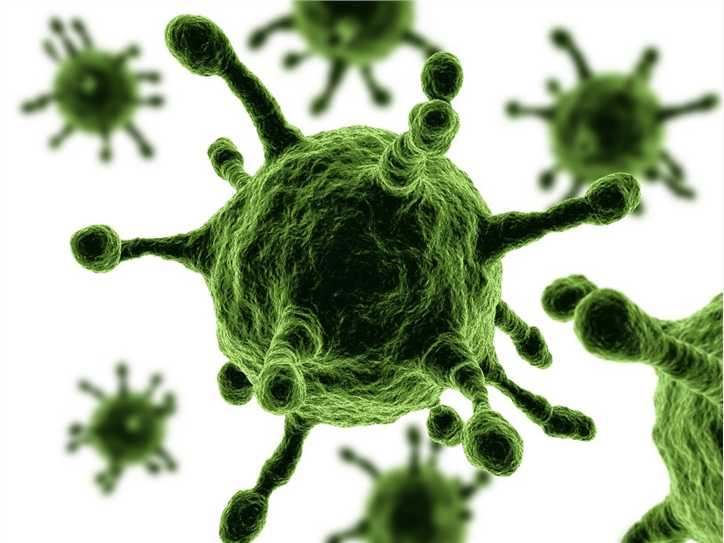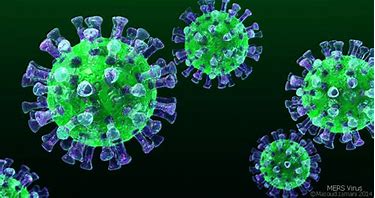CoVs belong to the Coronaviridae family, which together with Torovirinae make up the Coronaviridae family in the order Nidovirales. CoVs are divided into three genera (alpha, beta and gamma coronaviruses), corresponding to groups 1, 2 and 3, within the subfamily coronavirinae. CoVs are enveloped positive-strand RNA viruses with the largest known RNA genomes of 30–32 kb. All coronavirus genomes are arranged similarly with the replicase locus encoded within the 5' end and the structural proteins encoded in the 3' end of the genome arranged in the order hemagglutinin esterase (HE) if present, spike (S), small membrane (E), membrane (M), nucleocapsid (N) and internal (I) protein, encoded within the N gene. The nucleocapsid protein complexes with the genome RNA to form a helical capsid structure found within the viral envelope.
CoVs cause respiratory, enteric, hepatic and neurological diseases in a broad range of vertebrate species.

The worldwide outbreak of the severe acute respiratory syndrome (SARS) in 2003 was due to the transmission of SARS coronavirus (SARS-CoV), which infected more than 8,000 individuals and killed more than 700. Its discovery greatly renewed interest in coronavirus research. SARS-CoV may have evolved from coronaviruses infecting bats (SARS-like CoVs). Originally it was assumed that SARS-CoV is transmitted via respiratory droplets or direct contact. However, some researchers now suggest that it can also be spread via airborne or other unknown processes. The virus became infectious in humans probably through an intermediate passage into civets and mutations at least in the structural protein S recognized by the host receptor.
SARS symptoms often include fever, chills, and body aches which usually progress into pneumonia.
The SARS-CoV genome consists of 28 putative open reading frames (ORFs) in 9 mRNA transcripts. The genome encodes four major structural proteins: S, E, M, and N. Viral surface spike glycoproteins initiate SARS-CoV entry into cells by binding to angiotensin-converting enzyme 2 (ACE2) receptors, followed by conformational changes resulting in membrane fusion and genome delivery to the cytoplasm. S proteins are key targets for generating protective neutralizing antibodies against coronaviruses. Minor alterations in the S protein can affect tissue, species tropism, and coronavirus virulence. The primary function of a nucleocapsid protein is to form helical ribonucleoprotein complexes with viral RNA.
During the first outbreak of SARS, there were no laboratory tests for the disease. Diagnosis was made primarily through symptoms and medical history. Now, laboratory tests can be performed on nasal and throat swabs or blood samples. A chest X-ray or CT scan may also reveal signs of pneumonia characteristic of SARS.
There is no confirmed treatment that works for every person who has SARS. Antiviral medications and steroids are sometimes given to reduce lung swelling, but aren’t effective for everyone. Several vaccine strategies under study target SARS-CoV spike genes or proteins to induce neutralizing and protective antibodies. However, a significant concern is that vaccinations against different kinds of coronaviruses have markedly different outcomes. For example, anti-spike antibodies offer protection against mouse hepatitis and transmissible gastroenteritis, but boost feline-coronavirus (FCoV) infections.
MERS-CoV was first isolated in 2012 from an old person with severe pneumonia and multi-organ. The majority of MERS-CoV cases have originated in countries in the Middle Eas. Clinical illness associated with MERS-CoV ranges from mild upper respiratory symptoms to fulminant pneumonia and multi-system, human-to-human transmission of MERS-CoV is well documented in family clusters, community settings and more often in health care settings.

The symptoms caused by MERS-CoV infection include fever, cough and shortness of breath, which are very similar to those caused by SRAS-CoV. In contrast to SARS-CoV, MERS-CoV remains rather limited in its transmissibility. Nevertheless, there is accumulating evidence showing person-to-person transmission of the virus among close contacts.
MERS-CoV’s transmission raises a long-term concern that MERS-CoV could become pandemic in the future. It is therefore an urgent need to develop effective measures to counter its threat to global public health. The MERS-CoV respiratory illness is diagnosed with a special laboratory test that confirms the presence of the coronavirus. Currently, there is no vaccine to prevent MERS-CoV infection and there is no specific antiviral treatment recommended for MERS-CoV infection. Individuals with MERS often receive medical care to help relieve symptoms. For severe cases, current treatment includes a series of medical care to support vital organ functions.
References: